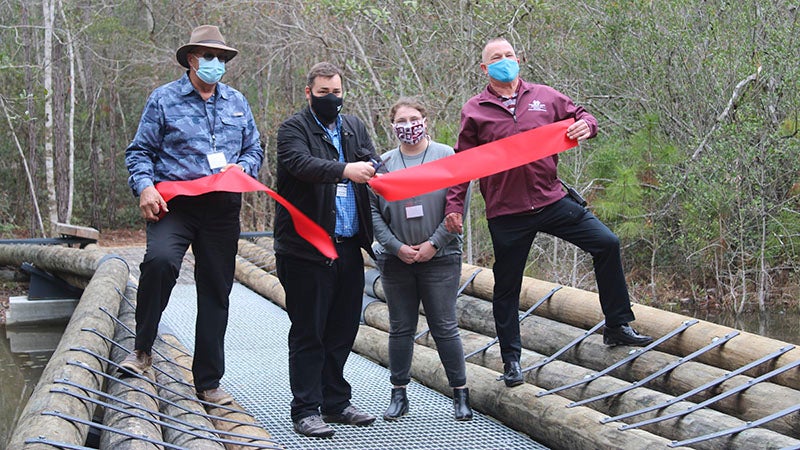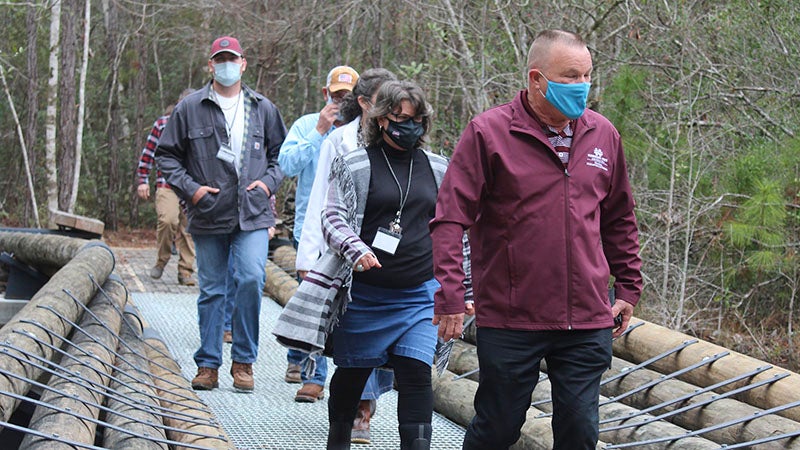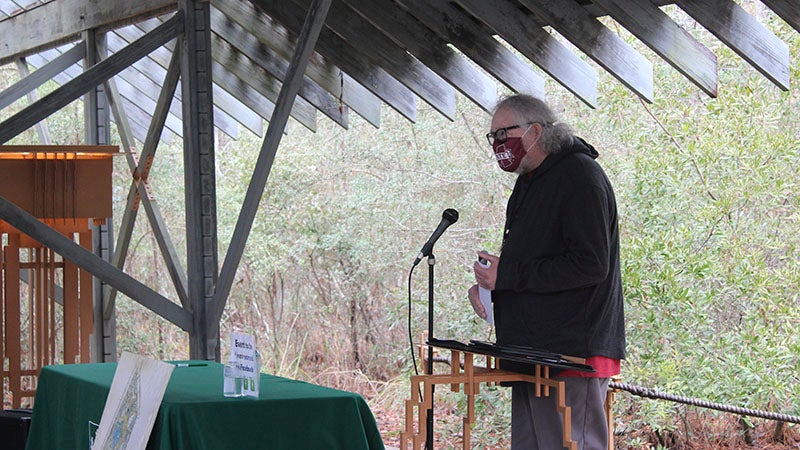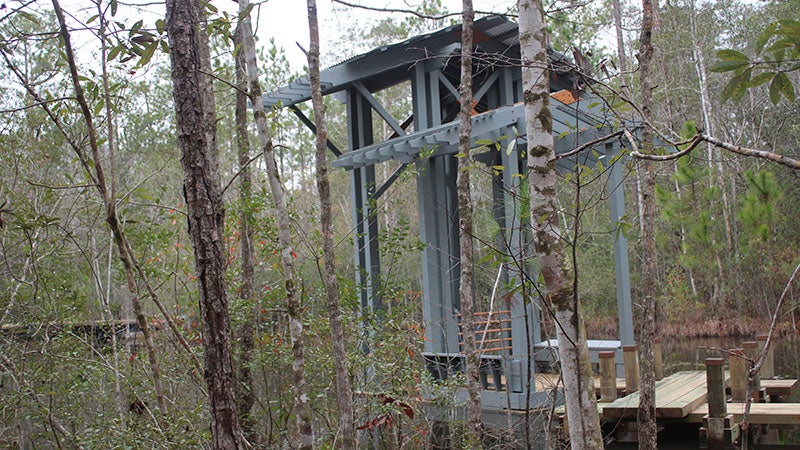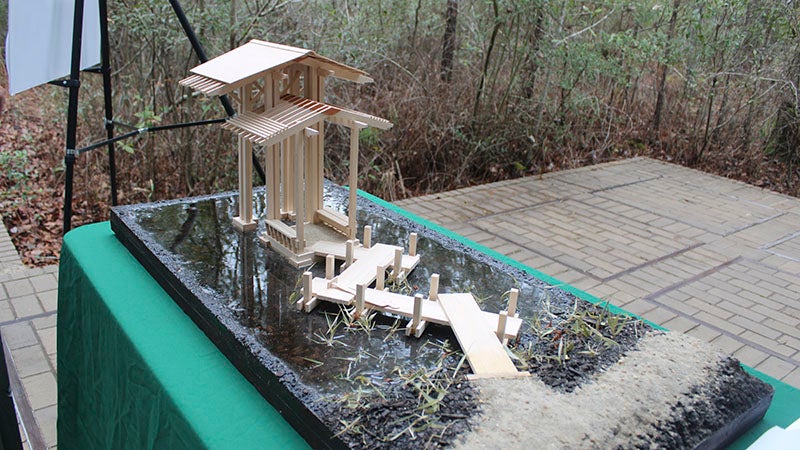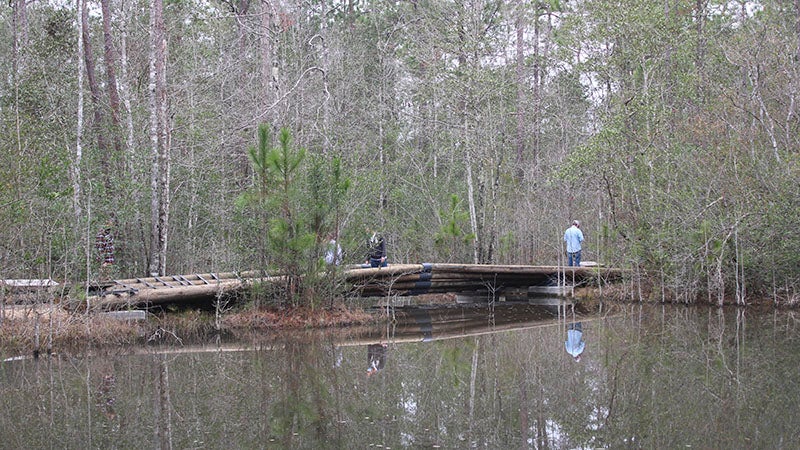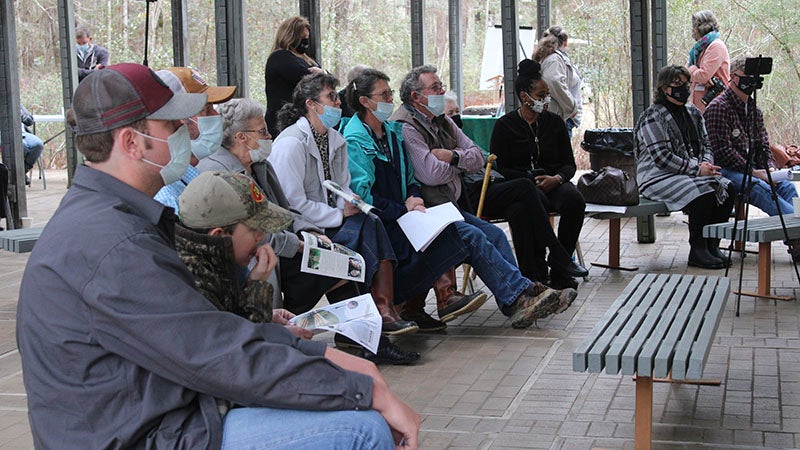Creating a place for reflection
Published 7:00 am Saturday, January 30, 2021
The hard work of Crosby Arboretum staff and volunteers, and the work of landscape architects and architecture students was celebrated on Jan. 23 with a ribbon cutting for two new features at the Crosby Arboretum’s Gum Pond exhibit.
Constructing the gum pond itself took many years of planning, funding from a National Fish and Wildlife Foundation grant and lots of physical labor. The contractor, Daniel Broom, and Building and Grounds Superintendent Terry Johnson had to carefully prune the roots of trees around the excavation site to prevent damage to existing trees, said Dr. Tim Schauwecker, MSU Professor of Landscape Architecture.
The gum pond ensures people can learn about Mississippi’s native landscapes while experiencing them, said Bob Brzuszek, Extension Professor, MSU Landscape Architecture.
“There are plenty of gum ponds out in Pearl River County and Hancock County and other places, but they’re disappearing,” said Brzuszek.
Constructed on the east end of the gum pond, the Rosen Pavilion is dedicated to the memory of active Arboretum volunteer and former Foundation board member Yvette Rosen. The pavilion was a gift to the Arboretum from the Rosen family.
The pavilion was designed by Robert Poore of Native Habitats Inc. Poore took inspiration from the surrounding trees and said he tried to be respectful of the Pinecote Pavilion that Faye Jones was famous for designing, which can also be found on the grounds of the Arboretum.
“In many ways I learned from him,” said Poore.
The Rosen Memorial Pavilion and the Mirror Perch Bridge constructed at the other side of the pond will offer a space where people can “find a moment of solace in a hectic world,” said Rosen’s daughter, Ann Rosen.
“While my mother was generous of heart and generous of knowledge, she was an intensely private person, so it’s only fitting that the design of this pavilion is an intimate place designed to provoke quiet contemplation,” she said.
The Mirror Perch Bridge was inspired by pine trees felled after a storm, creating a horizontal edge in a nonlinear environment, said Han Herrmann, Associate Professor MSU School of Architecture. The materials for the bridge come out of the Pine Belt and reflect what the land produces and is known for: telephone poles and logs.
Together the bridge and pavilion celebrate the Earth and the heavens.
“It is meant to celebrate the way that Robert’s pavilion soars into the sky,” said Hermann. “The way that it celebrates the heavens, the bridge is meant to celebrate the Earth, and our place in that relationship.”
Picayune native Danielle Leclercq was one of the architecture students who helped with the project, and said she enjoyed the experience.
“It is a big effort of faith for students to work on something they may never see constructed,” said Herrmann. “And that is an important lesson for all of us, that the things we work on today we may not benefit from, but future generations may.”


